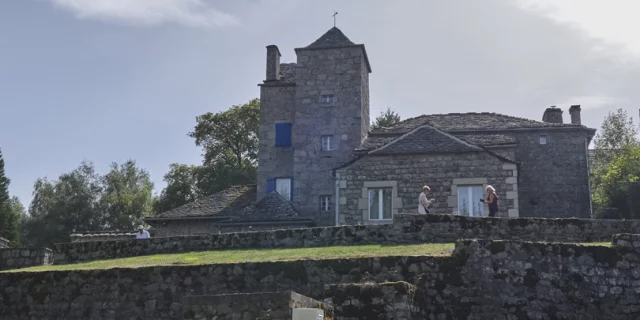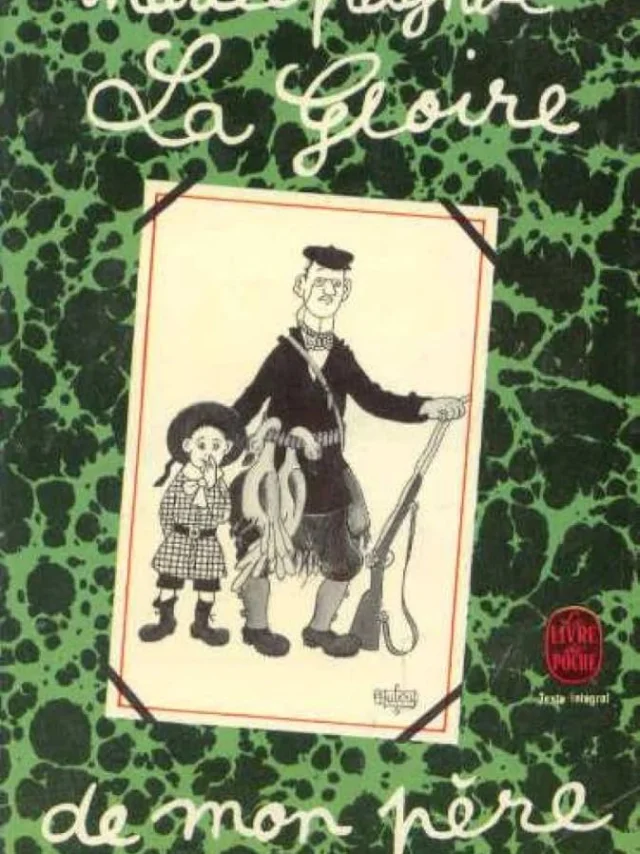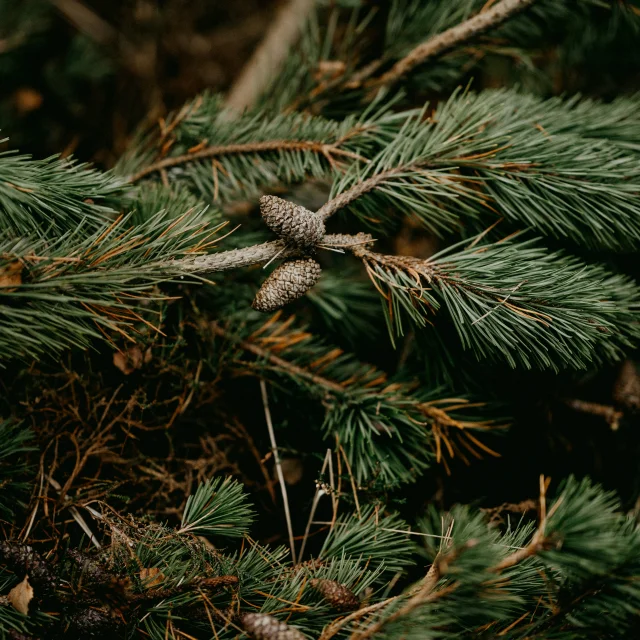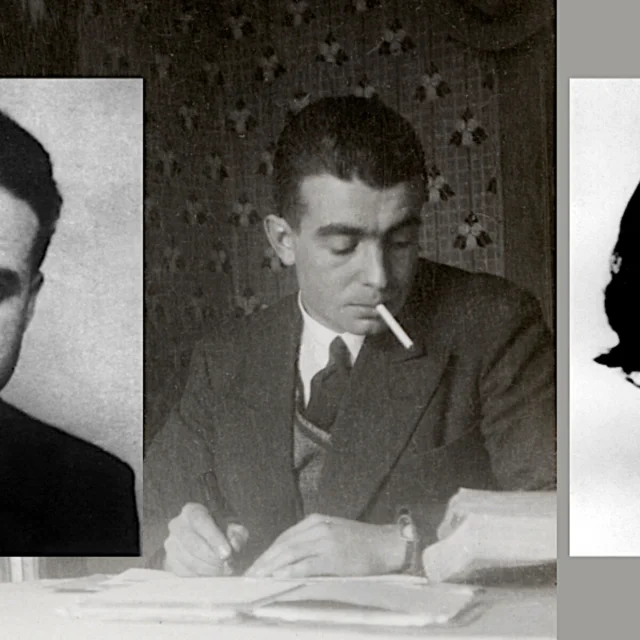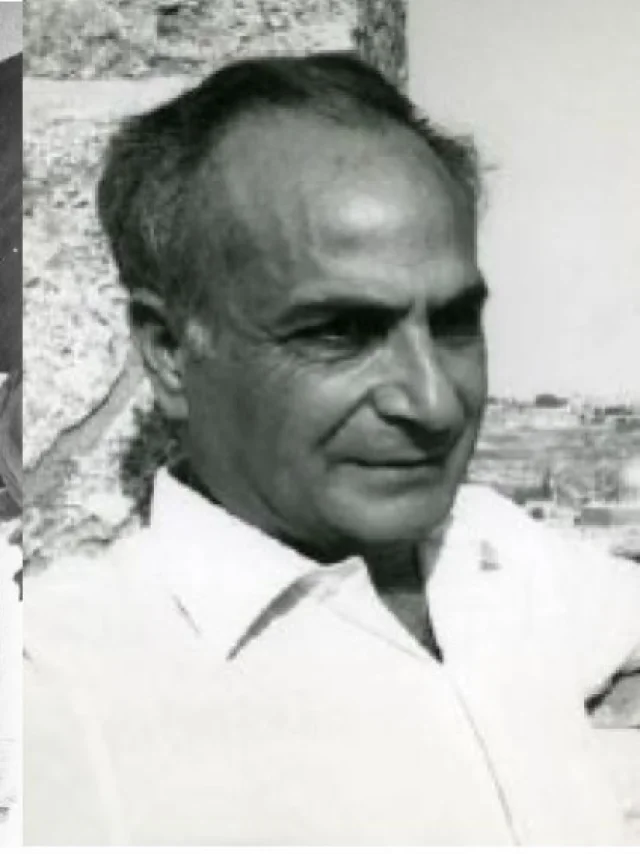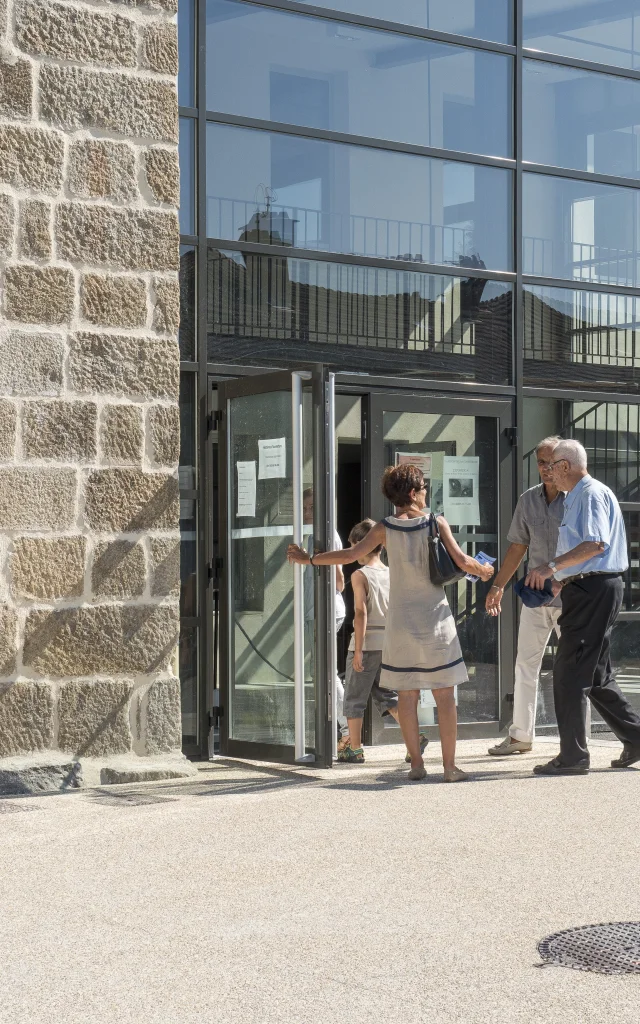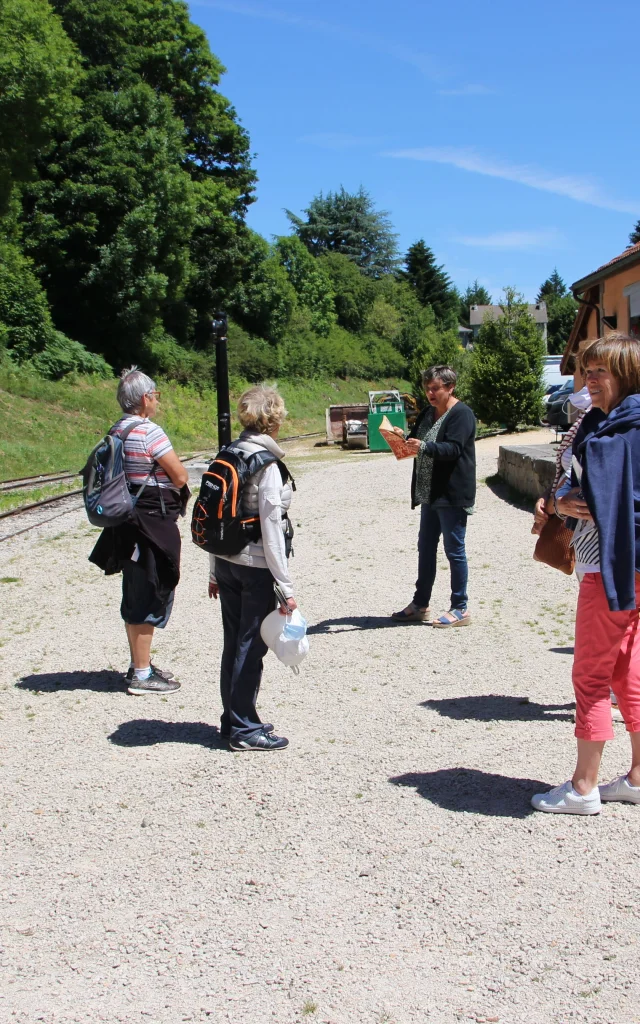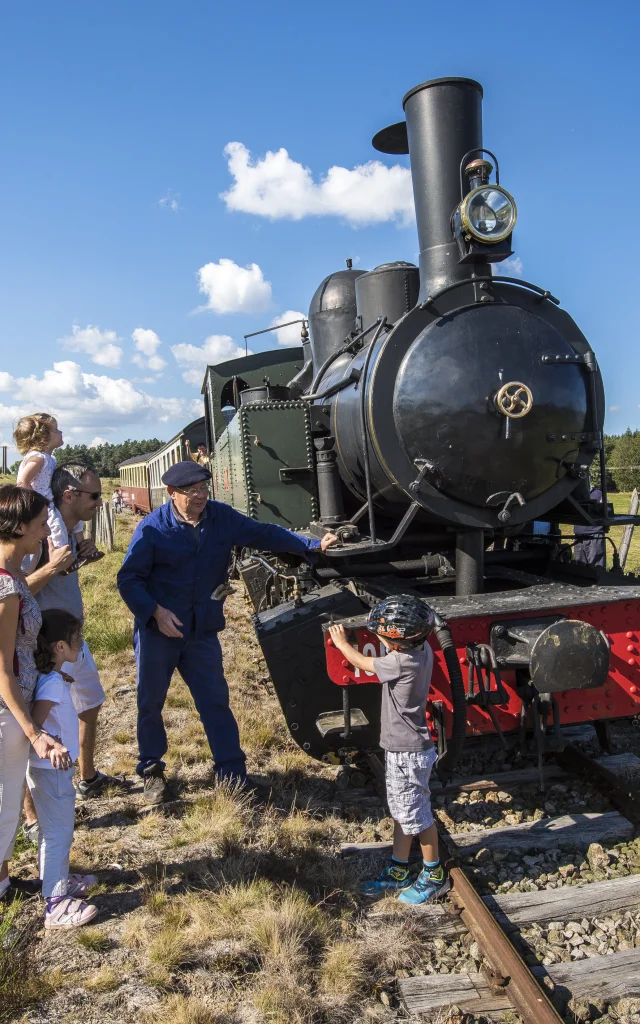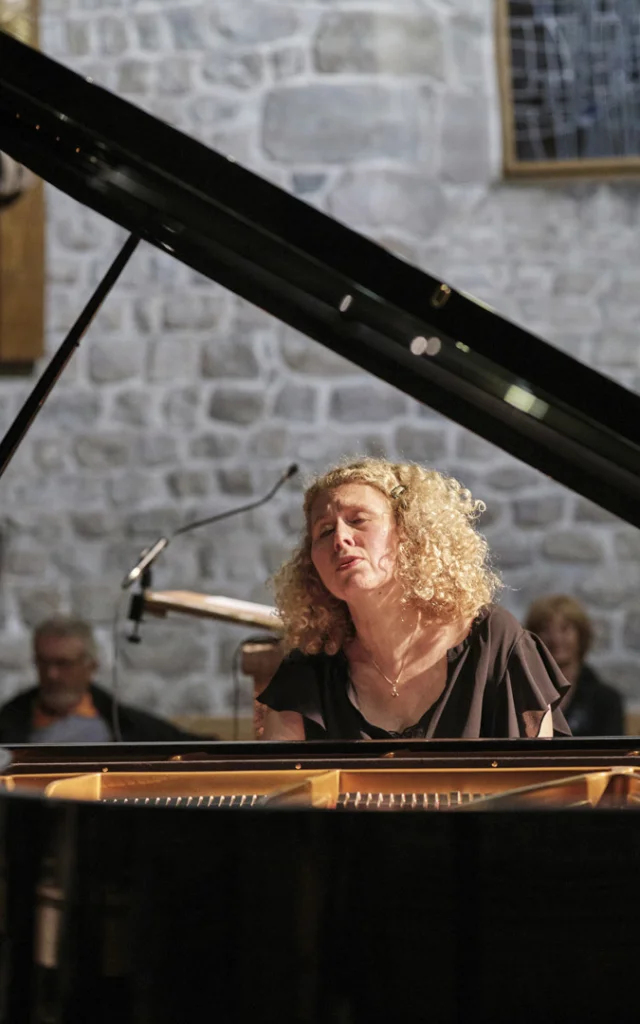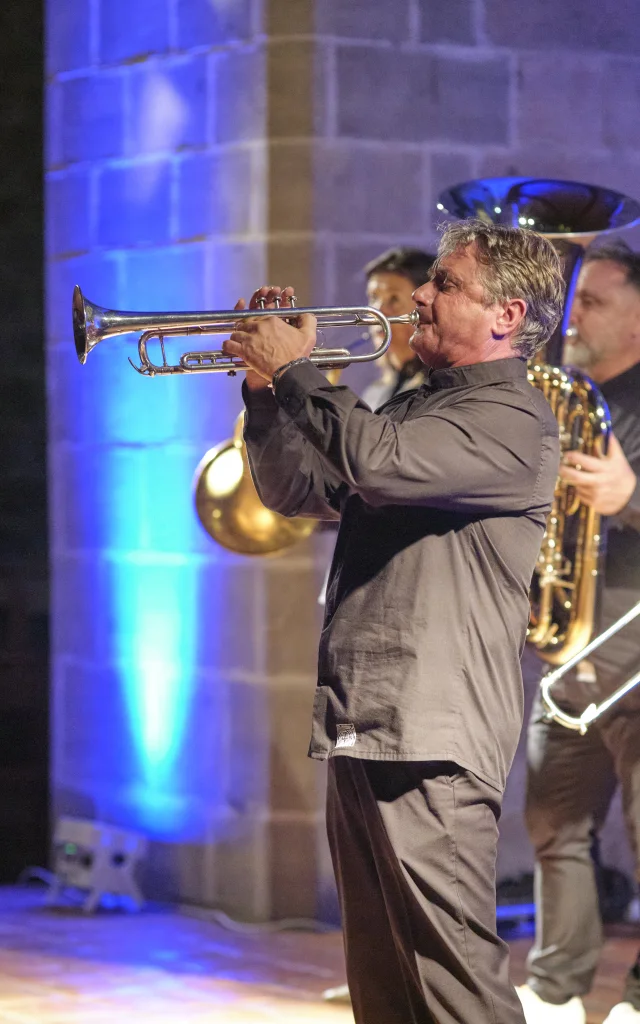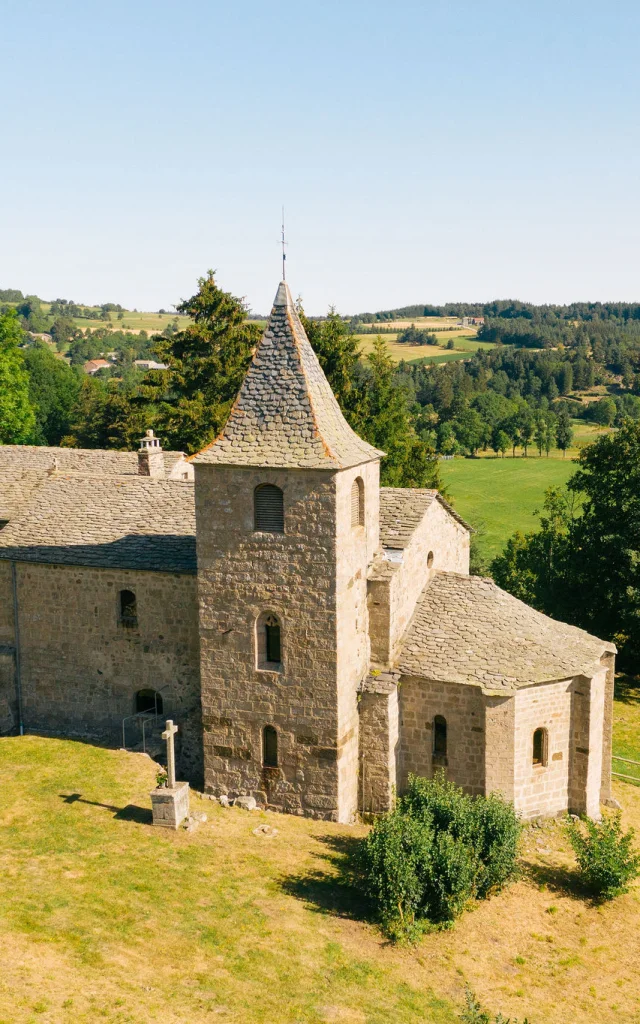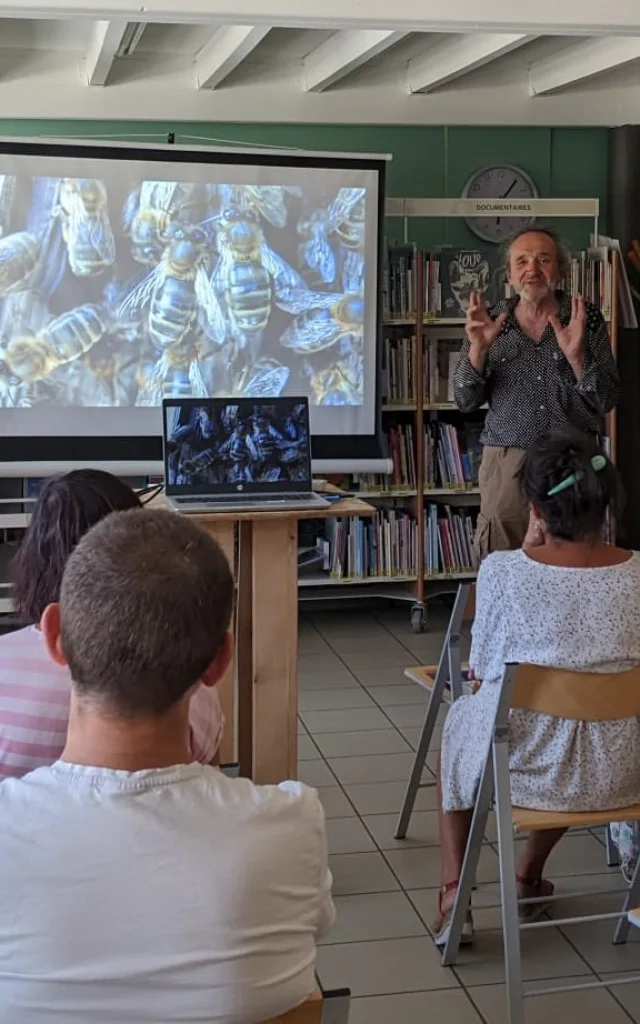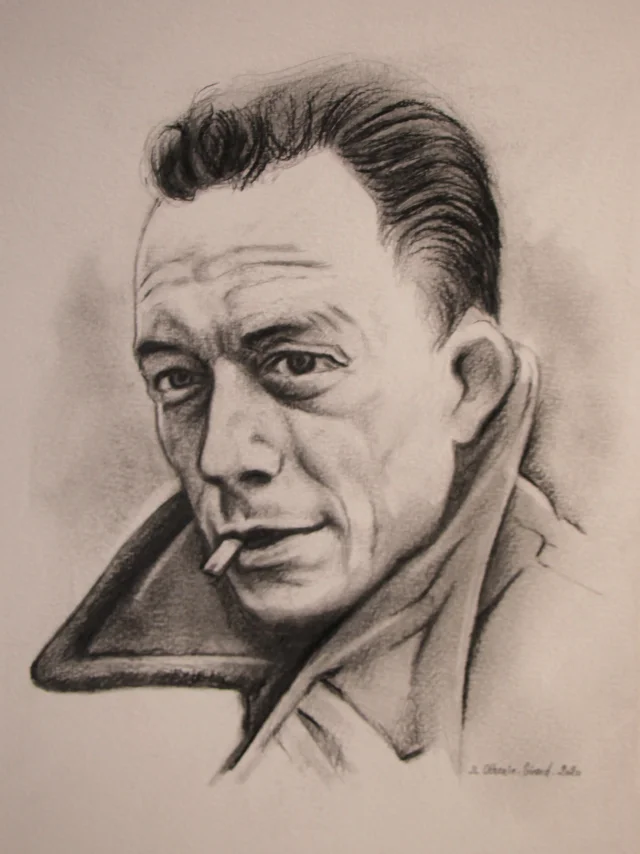 Portrait of Albert Camus
Portrait of Albert Camus Albert Camus
Let’s set off, dear visitors, to meet Albert Camus. Let’s leave Le Chambon-sur-Lignon on the D151, through the hamlet of La Bourghea, and cross the little bridge over the river Ligne, where Camus, in his blue overalls, used to catch trout. At Moulin, turn right. The path, lined with hundred-year-old beech trees, leads to the Panelier estate, whose restored walls, tower and crenellated gateway are a sight to behold!
Camus arrived in late summer 1942 at the Panelier guesthouse in Mazet-Saint-Voy, run by Sarah Oettly, a relative of his wife Francine. Stricken with tuberculosis in 1931, Francine recommended the fresh, pure mountain air to escape the “furnace” of Oran.
“I’m just writing you a note to give you my news and address. We landed in the mountains in an isolated fortified farmhouse, here good supplies, lots of trees”, 31-08-1942 Albert Camus to Emmanuel Roblès, a writer friend living in Algeria.
August 1942: “Before sunrise, above the high hills, the fir trees are indistinguishable from the undulations that support them… Against the barely faded background of the sky, it looks like an army of savages surging from behind the hill. As the sun rises and the sky brightens, the fir trees grow taller and the barbarian army seems to advance… Then, when the sun is high enough, it suddenly lights up the fir trees tumbling down the mountainside”. Notebooks II
